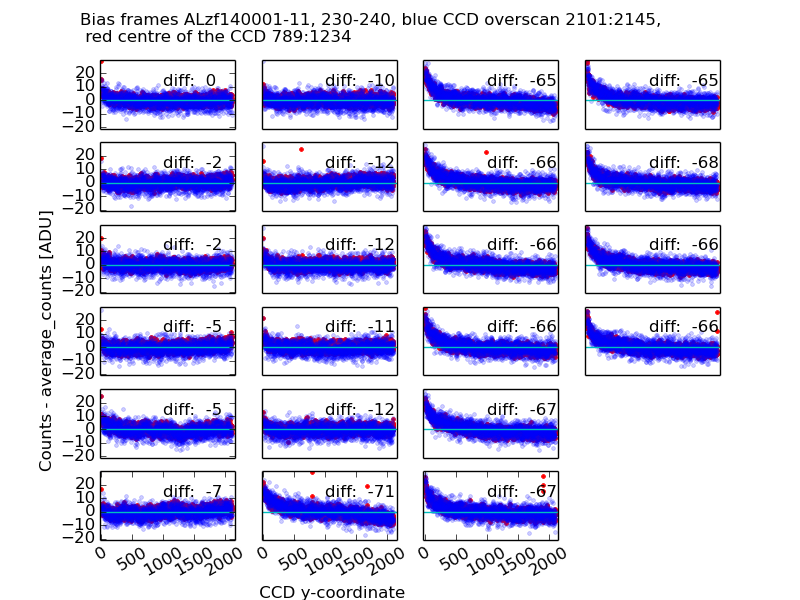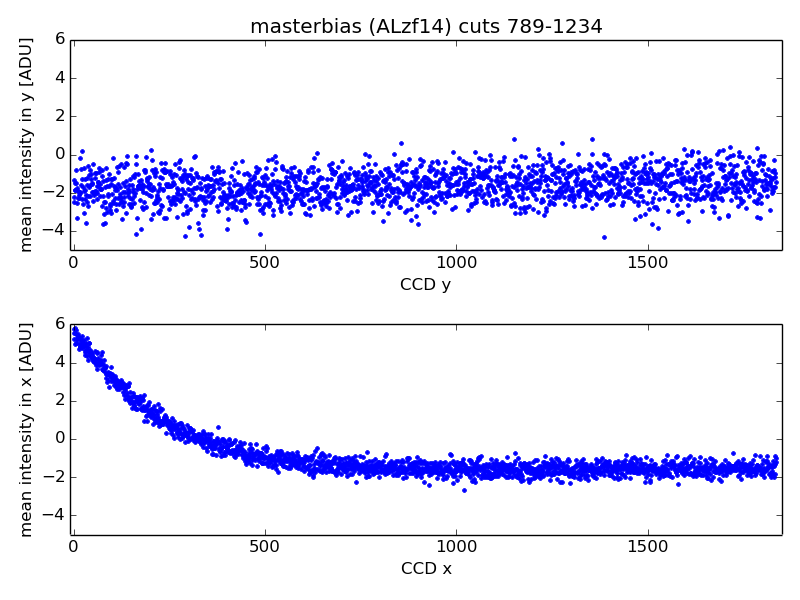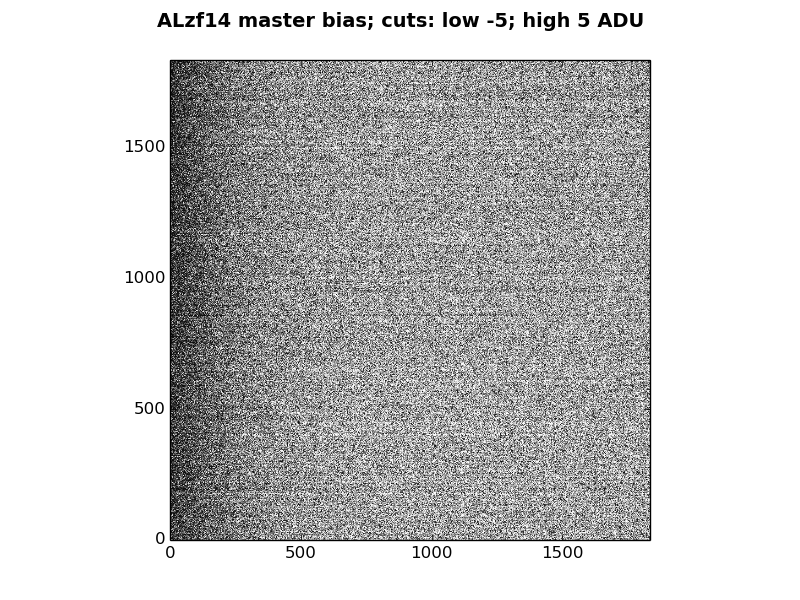
BIAS LEVEL: ALFOSC CCD14 with CCD3COM controllerThe ALFOSC web pageThe CCD14 web pageIn x-direction there is a typically a gradient from x=40 to 700 (raw frame) about 8-12 ADUs (about 2 e-), however, as the aperture wheel blocks the CCD to about x=200 there is a gradient from x=1 to 500 about 7 ADUs (note, 6 ADUs is about one electron about the same as "U-band Detected electrons/sq.pixel from sky in 6 seconds for typical dark-of-moon conditions", see the ETC for details). In y-direction, the imaging area is quite flat, however there can be an increasing or decreasing trend with a bottom-top difference can be more than ten ADUs. Fortunately the normal situation is that the overscan (2101-2145) follows the imaging area, hence a gradient is removed if a linear regression is fitted (and subtracted) in the overscan area. The average bias level can vary from afternoon to morning, 50-90 ADU mean difference is not uncommon.

The mean subtracted centre area, red symbols (CCD x: 789-1234) over-plotted with overscan blue symbols (CCD x: 2001-2145) for 11 afternoon and morning bias frames (ALzf140001-11,230-240). The cyan horizontal line (zero) is to guide eye for any gradients. The top right hand corner indicates the difference between the first bias (ALzf140001) and the current frame. As the the centre of the CCD has similar values as the overscan hardly any red symbols are visible.


A master bias frame from the 22 bias frames (ALzf140001-11,230-240). The gradient in x-direction is clearly visible both from the plot and the gray-scale image, however the peak-to-peak difference is only about one electron. Note, sometimes master bias show a 3 ADU (or so) gradient in y-direction, typically from y=1 to y=200. |
||
|